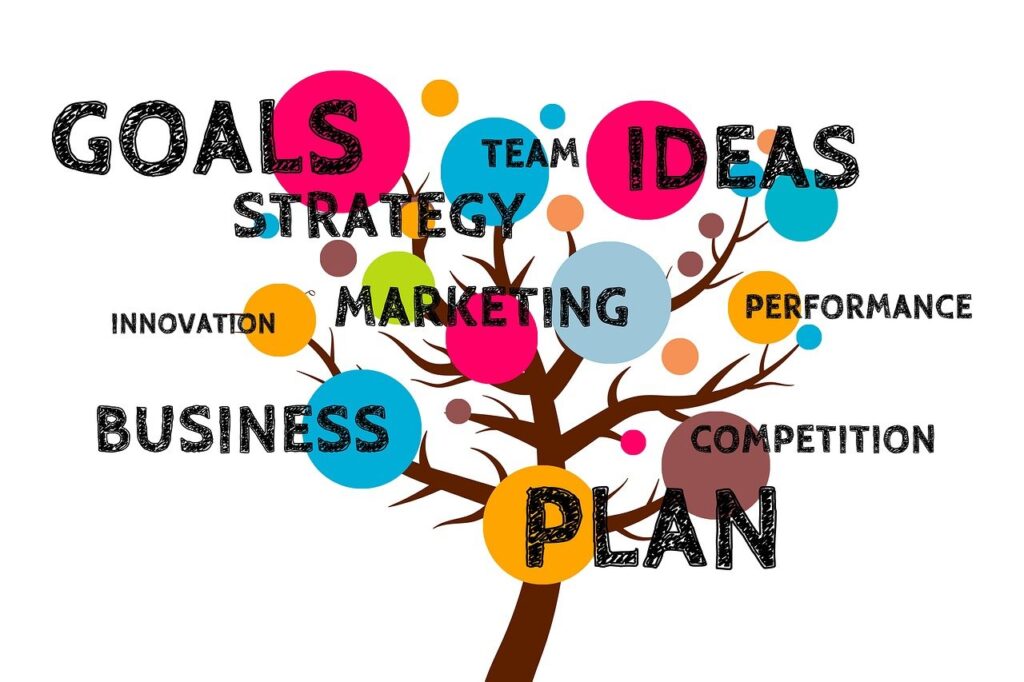
Disclaimer: As an Amazon Associate, I earn from qualifying purchases (at no cost to you, of course!).
What is a Business Plan?
A business plan is a document that lists a business’ goals and the plans to achieve those goals. It can vary in length depending on the size of your company.
What is the Purpose of a Business Plan?
The two most important purposes of a business plan are to…
- Clarify your mission, vision and goals – Many ideas sound promising until they are written down and reviewed. Business plans ensure your goals are feasible and realistic. HBR found that “entrepreneurs who write formal plans are 16% more likely to achieve viability than the otherwise identical non-planning entrepreneurs.” Planning leads to successful outcomes.
- Obtain funding – Any credible lender or investor will request to review a business plan before agreeing to fund a business. An investor wants to see that your goals and strategies align for success.
What About the Lean Startup Method?
The Lean Startup Method was coined by Eric Ries in his book published in 2011. The hypothesis is that most business plans don’t survive contact with the first customer (Steve Blank wrote this in 2010). Therefore, a Learn-Build-Measure process is more efficient.
By identifying target customers, building products that address customer needs and then testing those products, entrepreneurs can swiftly pivot when necessary. They also avoid investing enormous amounts of money on an idea no one is interested in. Without a doubt, many of the Lean Startup principles are useful and should be utilized. However, a business plan is still needed.
In a study published in 2021 in the New England Journal of Entrepreneurship, the panel investigated what led to more entrepreneurial success. They found that “writing a business plan is the sole business planning activity correlated with performance.” They also found that “talking to customers, collecting preorders and pivoting based on customer feedback are lean startup activities correlated with performance.”
In order to have the best chance at success...
- Create a business plan.
- Collect data (and preorders if selling products) from your target market.
- Pivot when it is required.
What to Include in an Effective Business Plan
Below are the seven key components to include in every business plan…
Executive Summary
The executive summary is arguably the most important section of a business plan. Often a potential investor only reads the summary. Write this section last after you’ve created your plan to ensure you can summarize your plan effectively. In addition to summarizing the plan, include high level facts about your company: location, number of employees, and products and services.
Company Description
A company description is directly after the summary. Explain your company’s purpose and what makes it unique from other similar companies. What are you providing to your customers that others are not?
Products & Services
If you plan to utilize a business plan for funding purposes, include a detailed section on products and services. List information on the products and services themselves – pricing, what makes them unique, etc – and also document what is needed to create the products and how you will fulfill orders.
Market Analysis
A market analysis is necessary to outline your target customer. How large is the market; what are their habits and important identifiable markers (i.e age ranges, gender, etc). Along with a customer analysis, add a competitor analysis to this section as well – who are your competitors and what are their strengths and weaknesses in the market? In addition, this is a good spot for a SWOT analysis – outline your business’ strengths, weaknesses, opportunities and threats.
Marketing Plan
Next, explain how you plan to gain and retain customers. What are your marketing strategies for hitting your business goals? List short term and long term goals that require a marketing strategy. Be as specific as possible with your advertising and marketing plans for lenders and investors.
Organization Structure/Team Bios
How is your business structured? What is everyone’s role and responsibilities? How will the team grow or expand in the future? Answer these questions and then highlight expertise to show why your team is the best in the industry at what they do. Resumes and bios should be included as well.
Financial Summary
Last but not least, the financial summary is used to detail the business operating cost/expenses, projected profits, and any investor funding requests needed. This will be the final section of your plan. Be sure to attach financial statements to this section as well.
Conclusion
A business plan is an essential document for planning and funding purposes, however, you don’t have to spend hours and hours completing the perfect plan. As long as the above 7 components are included, you are on your way to success. It’s also important to remember that targeting your customer base, testing your hypotheses and pivoting when necessary will contribute to additional chances of a successful outcome.
If you need assistance with writing the best business plan for your company, reach out to me here.